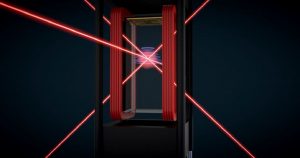
NASA Sends Coldest Place In Universe Into Space
NASA’s Cold Atom Laboratory (CAL) is a chamber which cools a cloud of atoms known as Bose-Einstein condensates (BECs) to a fraction of a degree above absolute zero – 100 million times colder than the depths of space.
CAL is a box the size of an ice-chest, designed and built by NASA’s Jet Propulsion Laboratory, and it uses lasers and magnets to ensure the atoms are cooled to within the limits of existence.

Getting matter this cold is of huge benefit to scientists because it reveals the effects of quantum mechanics, including superfluidity.
Keeping atoms this cold is not just about using refrigeration, though – it is a matter of eliminating all of the forces acting on (and thus affecting the temperature of) those atoms.
The gravity of Earth is causing NASA’s Cold Atom Laboratory to warm up too much under the planet’s enormous pull.
“Studying these hyper-cold atoms could reshape our understanding of matter and the fundamental nature of gravity,” said CAL Project Scientist Robert Thompson.
“The experiments we’ll do with the Cold Atom Lab will give us insight into gravity and dark energy – some of the most pervasive forces in the universe.”
On Earth, BECs are dragged down by the pull of gravity and can only be observed for a fraction of a second.
In the microgravity environment of the International Space Station, however, the freely evolving BECs can be observed for up to 10 seconds.
As superfluid, BECs seem to have zero viscosity, where their atoms move without friction as if they were all one solid substance.